第137章 NORTHERN CHILE.CONCLUSION(7)
The journey from Guasco to Copiapo, owing to the utterly desert nature of the country, was necessarily so hurried, that I do not consider my notes worth giving.In the valley of Copiapo some of the sections are very interesting.From the sea to the town of Copiapo, a distance estimated at thirty miles, the mountains are composed of greenstone, granite, andesite, and blackish porphyry, together with some dusky-green feldspathic rocks, which I believe to be altered clay-slate: these mountains are crossed by many brown-coloured dikes, running north and south.Above the town, the main valley runs in a south-east and even more southerly course towards the Cordillera, where it is divided into three great ravines, by the northern one of which, called Jolquera, I penetrated for a short distance.The section, Section 1/3 in Plate 1, gives an eye-sketch of the structure and composition of the mountains on both sides of this valley: a straight east and west line from the town to the Cordillera is perhaps not more than thirty miles, but along the valley the distance is much greater.Wherever the valley trended very southerly, I have endeavoured to contract the section into its true proportion.This valley, I may add, rises much more gently than any other valley which I saw in Chile.
To commence with our section, for a short distance above the town we have hills of the granitic series, together with some of that rock [A], which Isuspect to be altered clay-slate, but which Professor G.Rose, judging from specimens collected by Meyen at P.Negro, states is serpentine passing into greenstone.We then come suddenly to the great gypseous formation [B], without having passed over, differently from, in all the sections hitherto described, any of the porphyritic conglomerate.The strata are at first either horizontal or gently inclined westward; then highly inclined in various directions, and contorted by underlying masses of intrusive rocks;and lastly, they have a regular eastward dip, and form a tolerably well pronounced north and south line of hills.This formation consists of thin strata, with innumerable alternations, of black, calcareous slate-rock, of calcareo-aluminous stones like those at Coquimbo, which I have called pseudo-honestones of green jaspery layers, and of pale-purplish, calcareous, soft rotten-stone, including seams and veins of gypsum.These strata are conformably overlaid by a great thickness of thinly stratified, compact limestone with included crystals of carbonate of lime.At a place called Tierra Amarilla, at the foot of a mountain thus composed there is a broad vein, or perhaps stratum, of a beautiful and curious crystallised mixture, composed, according to Professor G.Rose, of sulphate of iron under two forms, and of the sulphates of copper and alumina (Meyen's "Reise" etc.Th.1, s.394.): the section is so obscure that I could not make out whether this vein or stratum occurred in the gypseous formation, or more probably in some underlying masses [A], which I believe are altered clay-slate.
SECOND AXIS OF ELEVATION.
After the gypseous masses [B], we come to a line of hills of unstratified porphyry [C], which on their eastern side blend into strata of great thickness of porphyritic conglomerate, dipping eastward.This latter formation, however, here has not been nearly so much metamorphosed as in most parts of Central Chile; it is composed of beds of true purple claystone porphyry, repeatedly alternating with thick beds of purplish-red conglomerate with the well-rounded, large pebbles of various porphyries, not blended together.
THIRD AXIS OF ELEVATION.
Near the ravine of Los Hornitos, there is a well-marked line of elevation, extending for many miles in a N.N.E.and S.S.W.direction, with the strata dipping in most parts (as in the second axis) only in one direction, namely, eastward at an average angle of between 30 and 40 degrees.Close to the mouth of the valley, however, there is, as represented in the section, a steep and high mountain [D], composed of various green and brown intrusive porphyries enveloped with strata, apparently belonging to the upper parts of the porphyritic conglomerate, and dipping both eastward and westward.I will describe the section seen on the eastern side of this mountain [D], beginning at the base with the lowest bed visible in the porphyritic conglomerate, and proceeding upwards through the gypseous formation.Bed 1 consists of reddish and brownish porphyry varying in character, and in many parts highly amygdaloidal with carbonate of lime, and with bright green and brown bole.Its upper surface is throughout clearly defined, but the lower surface is in most parts indistinct, and towards the summit of the mountain [D] quite blended into the intrusive porphyries.Bed 2, a pale lilac, hard but not heavy stone, slightly laminated, including small extraneous fragments, and imperfect as well as some perfect and glassy crystals of feldspar; from one hundred and fifty to two hundred feet in thickness.When examining it in situ, I thought it was certainly a true porphyry, but my specimens now lead me to suspect that it possibly may be a metamorphosed tuff.From its colour it could be traced for a long distance, overlying in one part, quite conformably to the porphyry of bed 1, and in another not distant part, a very thick mass of conglomerate, composed of pebbles of a porphyry chiefly like that of bed 1:
this fact shows how the nature of the bottom formerly varied in short horizontal distances.Bed 3, white, much indurated tuff, containing minute pebbles, broken crystals, and scales of mica, varies much in thickness.